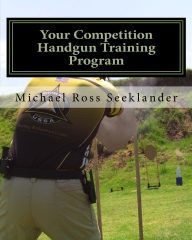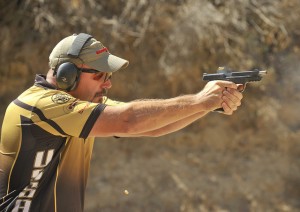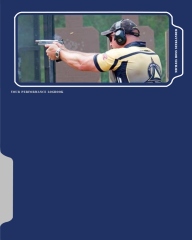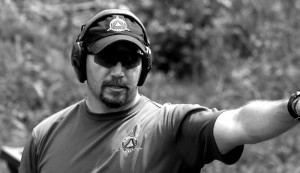Widgetized Section
Go to Admin » Appearance » Widgets » and move Gabfire Widget: Social into that MastheadOverlay zone
Team Erhardt Project: The Best Laid Plans
This is the fourth installment in the Team Erhardt Project series which appears on The Shooting Wire.
The saying goes, ‘plan your work, work your plan’.
 In order to improve your shooting you need a plan, a regimen that allows you to build your shooting skills while tracking your progress. At least that’s what I get from Mike Seeklander‘s book Your Competition Handgun Training Program.
In order to improve your shooting you need a plan, a regimen that allows you to build your shooting skills while tracking your progress. At least that’s what I get from Mike Seeklander‘s book Your Competition Handgun Training Program.
Seeklander really drives home the need for a structured program, complete with not just the obvious drills for dry fire and live fire, but mental toughness, visualization and physical fitness too. He notes in his introduction that “the biggest obstacle to most people reaching their shooting goals is the lack of a definitive plan.”
I had a plan. It wasn’t overly elaborate, but there were two clearly defined steps in my past Steel Challenge efforts.
Step #1: Show Up
Step #2: Shoot
I know, it’s hard to believe I didn’t do better than my 210th place finish with that plan.

I might want to be more like Mike, who finished 3rd in Production (39th overall) at the 2010 Steel Challenge. Photo: Yamil Sued
While my own two-step game plan fits my personal philosophy of success through procrastination, according to Seeklander it’s not going to get me very far at this year’s Steel Challenge. So he’s given me a formal training outline.
One of the reasons I wanted to enlist Seeklander’s help in my effort is because of his book. When I saw the announcement about Your Competition Handgun Training Program it dawned on me that the top shooters really do more than practice – they employ a formal training program.
I’m not sure why, but I always assumed that the best shooters just practiced more. They put more time in behind the gun and that’s why they moved up through the ranks. Yeah they had a plan for their practice, kind of like going to the gym for a casual workout, but I never imagined it as a Training Program.
Reading Seeklander’s book (also offered as a class) you quickly realize how ineffective the casual approach is.
There are entire business school programs built on understanding and using metrics to manage your business, so it should come as no surprise that metrics play a key roll in Seeklander’s approach to training.

Your Performance Logbook has over 70 pages of dry fire logs to fill out, not to mention live fire and match logs.
In the overview of the training program he sent me, Mike instructs me to “log each live fire stage practice, including the five times, and the time for my first shot.”
Because just like in business, if you don’t measure it you can’t manage it.
I must be in for a lot of management then because I’m supposed to do a copious amount of note taking throughout my training. And, I’m expected to review these notes frequently. In the chapter on the live fire portion of the training program he points out that, “I usually read over my notes from my last training session while I am prepping my magazines and putting on my gear.”

Considering Seeklander's a USMC combat vet of Desert Shield and Desert Storm, I'd better do what he says. Photo courtesy Mike Seeklander
Honestly, I’d probably gloss over, if not outright skip, that bit of the process if it weren’t for Mike’s immediate admonition of “DO NOT skip this step.”
How the hell did he know what I was thinking?
It seems I’m quickly running out of excuses and will be forced to fully abandon my success through procrastination approach. I’ve got a ‘coach’ who’s already onto the inner slacker that resides in all of us…or perhaps just me. I’ve got Mike’s books, Your Competition Handgun Training Program and Your Performance Logbook. And, thanks to Mike’s help I have a plan – a detailed training program in fact.
So I guess it’s time to work my plan.
But while they say ‘plan you work, work your plan’, they also say that ‘no plan survives first contact with the enemy’. This could be a problem for I have met the enemy….and in this case, he is me.
– Paul Erhardt
You can also follow the Team Erhardt Project on Twitter at @TheShootingWire, use hashtag #TeamErhardt.



 MidwayUSA
MidwayUSA Ruger Firearms
Ruger Firearms SCCY Firearms
SCCY Firearms Streamlight
Streamlight Action Targets
Action Targets Gunsite Academy
Gunsite Academy
You must be logged in to post a comment Login